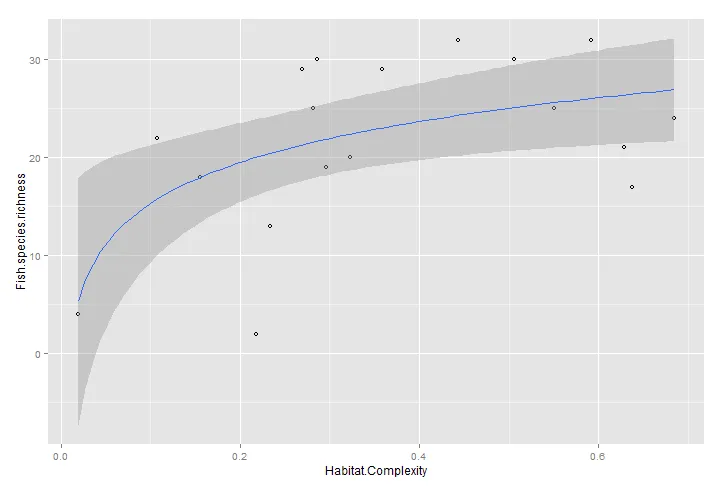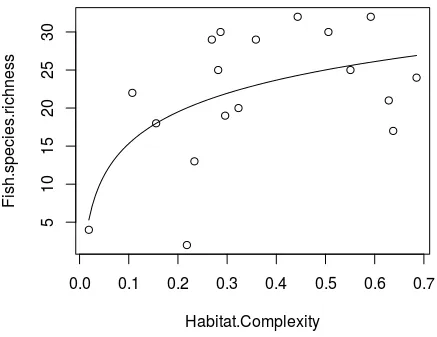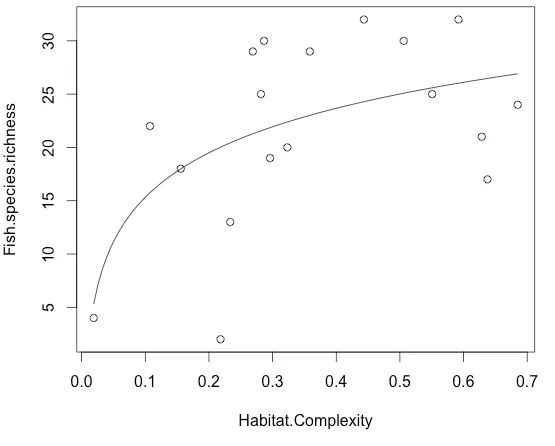我有一组数据,绘制出来呈现出曲线关系。
Fish.species.richness Habitat.Complexity log.habitat
17 0.6376 -0.1954858
13 0.2335 -0.6317131
30 0.2866 -0.5427238
20 0.3231 -0.4906630
22 0.1073 -0.9694003
25 0.2818 -0.5500590
2 0.2182 -0.6612448
4 0.0189 -1.7246886
19 0.2960 -0.5287083
25 0.5507 -0.2590849
29 0.2689 -0.5704900
21 0.6286 -0.2016602
18 0.1557 -0.8078509
24 0.6851 -0.1642460
30 0.5059 -0.2959353
32 0.4434 -0.3532043
29 0.3585 -0.4455108
32 0.5920 -0.2276783
当我对x轴进行记录并进行线性回归以查找截距和斜率时,我可以添加一条适合数据的线:
summary(lm(Fish.species.richness~log.habitat,data=three))
plot(three$log.habitat,
three$Fish.species.richness,
xlab='Log Habitat Complexity',
ylab='Fish Species Richness')
abline(29.178,13.843)
然而,当我进行曲线回归并尝试绘制曲线时,它并不符合数据,我错在哪里了?
mod.log<-lm(Fish.species.richness~log(Habitat.Complexity),data=three)
plot(three$Habitat.Complexity,
three$Fish.species.richness)
abline(mod.log)


